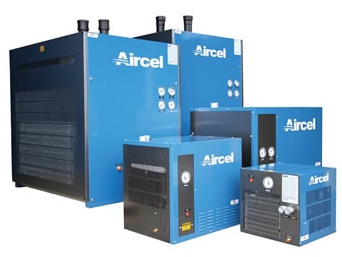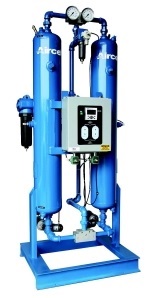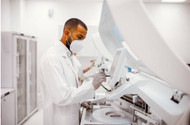Reasons Why You Should Invest in a Quality Laborat…
Posted by AVP on Sep 28th 2022
Gases that are hazardous, corrosive, and unstable can be inadvertently created during chemical experiments. In order to make sure everything goes smoothly, it's important to put more stringent restrictions on the machinery used.
Measurement devices, tools, and instruments have advanced greatly in recent years, and today's laboratories are well-equipped to handle any task. Exams, analyses, experiments, and quality controls in the pharmaceutical, chemical, or medical fields are only some of the many uses for these instruments.
The Role of Laboratory Air Dryers
Lab air utilized for laboratory equipment in the research industry and universities must be treated to remove contaminants and dry them out before they can be used in applications and specialized lab operations.
Dryers for compressed air in the lab remove the moisture that forms as a byproduct of the compression process.
Compressors will always produce some amount of moisture, but if that moisture is correctly dealt with, it can be kept from wreaking havoc on pneumatic tools, air motors, valves, and other parts, and it can also be kept from contaminating the final product.
Maintaining dry, clean, and suitable compressed air for your tasks will save you money in the long run by reducing the need for repairs and production shutdowns.
We'll go through two different kinds of air dryers—regenerative desiccant compressed air dryers and refrigerated air dryers—to ensure that the air compressor only releases dry, clean air in your laboratory.
Before we move on, I should mention that Air & Vacuum Process, Inc. stocks all of the air dryers, air compressors, and breathing air systems you might possibly require.
What Happens When Your Compressed Air Contains Moisture?
Because moisture is the most common contaminant in the air, laboratory air dryers are an essential part of any air treatment system.
Keep reading if you're thinking, "So what? It's only water." Why? Because water may wreak havoc on your compressed air system, your downstream machinery, and, most crucially, your final products.
That's why skipping this step in treating compressed air might have disastrous results. Compressed air equipment becomes less dependable and wears out faster as a result, necessitating more frequent servicing.
Compressed air that contains moisture can quickly become a major issue, both in terms of size and expense. As a matter of fact, it can lead to a wide range of serious issues.
The question, therefore, becomes: how does moisture enter your compressed air?
It's a shame that this is a natural result of any method that involves compressing air. There is always some moisture in the air around us.
An overabundance of compressed air provides the perfect environment for the proliferation of germs, including mold, mildew, and bacteria. One reason to try to install your compressors in dry and cool settings is that these living creatures flourish (i.e. proliferate) in the hot and humid environments that are prevalent in compressed air systems.
That's a significant issue since these bacteria are harmful not just to your compressed air system but also, potentially, to the final products you produce on your table. This is especially true for things that people actually use, like food, drink, and medicine.
If you don't take care of your compressed air properly, you risk having to recall products, face legal action, and have your reputation damaged. Buying high-quality laboratory air dryers and avoiding these other options is a far more cost-effective option.

How Does a Refrigerated Air Dryer Work?
Water vapor is present in the atmosphere at all times, in case you didn't know. Compressing air results in a higher concentration of water.
Compressed air must be handled to prevent further complications in the compressor setup. Here, we'll discuss using a refrigerated compressed air dryer to dehumidify the space.
Okay, so what exactly is refrigerated drying?
Through a process known as refrigerated or refrigerant drying, compressed air is cooled, causing much of the water to condense and be collected as a byproduct. Compressed air is then warmed to room temperature after chilling and condensing to prevent pipe condensation.
The amount of cooling capacity needed for the refrigerant circuit is decreased due to the heat exchange between the entering and exiting compressed air. Inbound compressed air temperature is also decreased as a result of this heat exchange. A closed refrigeration system is used to cool the compressed air.
How Do Regenerative Desiccant Air Dryers Work?
Compressed air that is both dry and clean, which is reliably and efficiently produced, is crucial for various uses in industry and the laboratory.
If you care about the consistency of your laboratory processes and the quality of your final products, you need a dry compressed air system. Corrosion in pipes, broken pneumatic tools, and spoiled goods are just some of the problems that might arise from not treating the air.
When you buy a desiccant dryer from AVP, you can be assured that your systems and processes will be safeguarded by high-quality dry compressed air that is produced in a dependable and energy-efficient manner.

Hygroscopic materials, also known as "desiccants," become saturated with adsorbed water when they exchange water vapor with humid compressed air.
Activated alumina, silica gel, dry-o-lite, molecular sieve, or a ceramic bed are all examples of hygroscopic materials that may be purchased from our website and used in desiccant air dryers to remove moisture from humid air.
Adsorption air dryers usually include two drying containers, one for the desiccant and one for the dried air, so that it can be frequently replenished to restore its drying capacity. While the second vessel is regenerating, the entering compressed air will be dried in the first. When one tower has finished regenerating, the other tower takes over its duties.
In order to attain lower pressure dew points and conform to the stricter air quality regulations in laboratories, we discovered that a regenerative desiccant dryer is typically required.
Investing in the proper technologies to protect your system and final products can help you avoid a lot of trouble and money. When it comes to laboratory air dryers and other components of air systems, you can rely on us to provide you with the best solution.
Is it your desire to talk to a professional? Dial 866-660-0208 to reach us.
